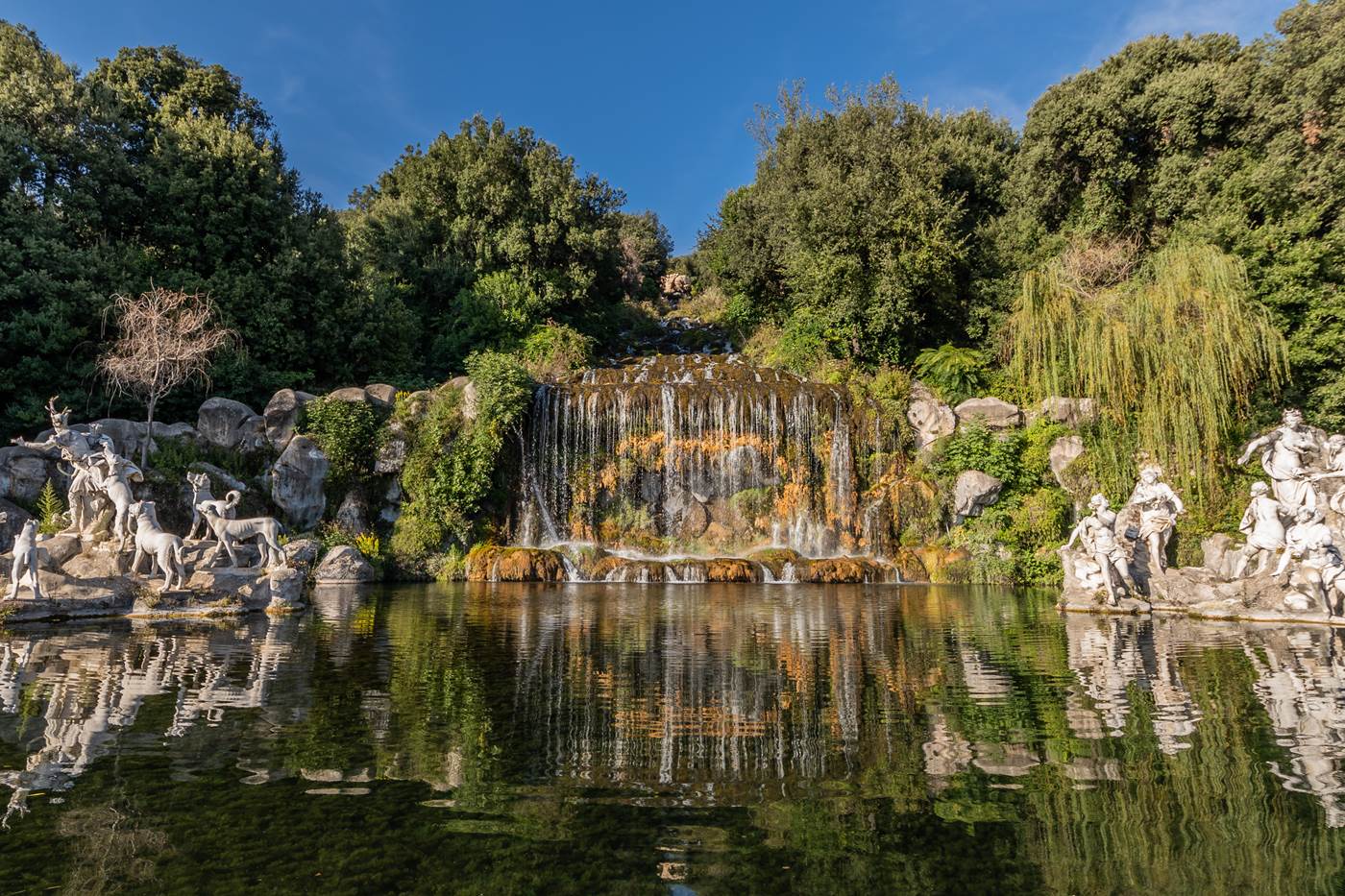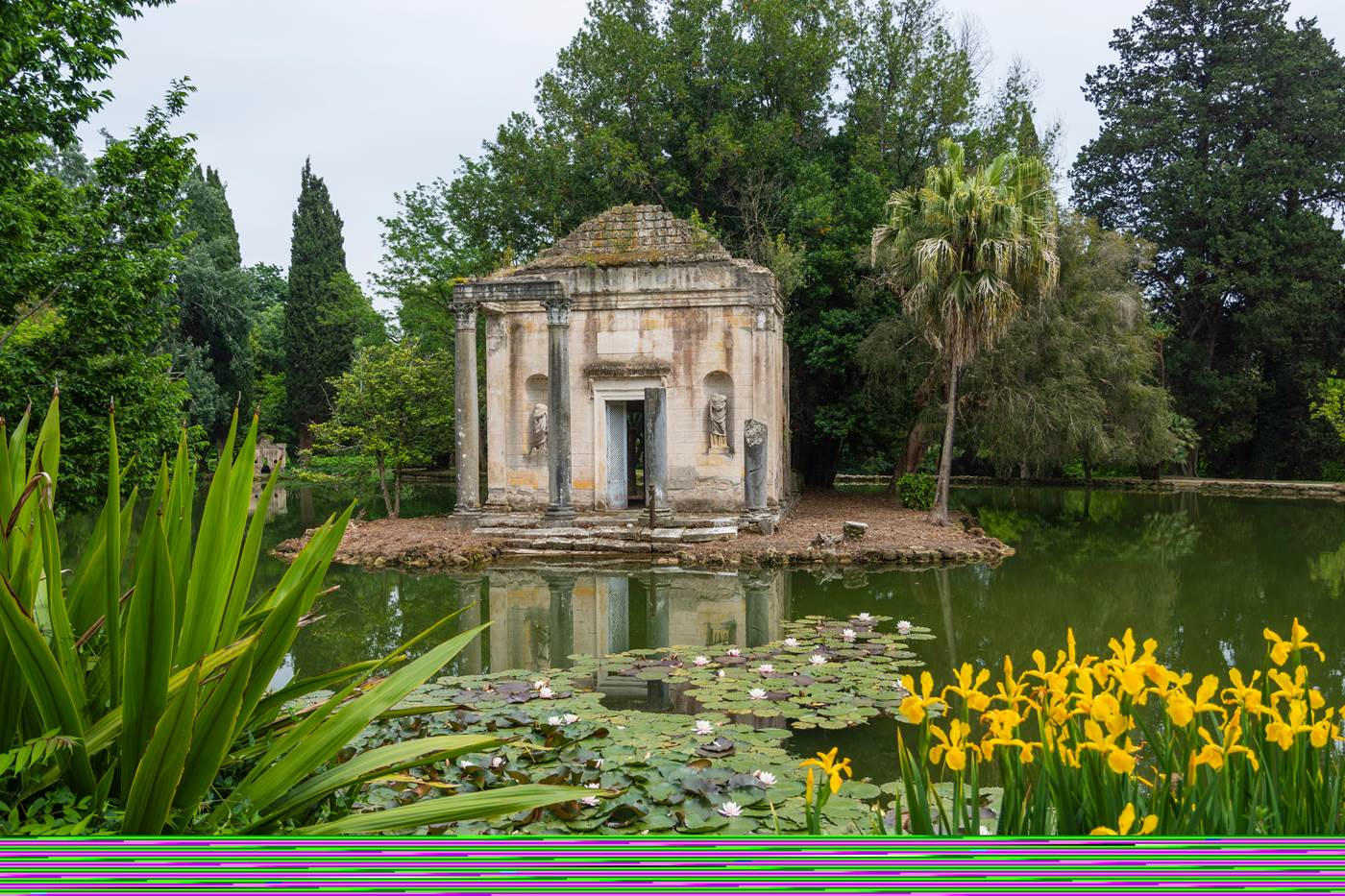The Reggia of Caserta
A visit to Charles of Bourbon’s royal palace, with its atmospheres of centuries past and hints of the contemporary
An Italian Versailles, a Neapolitan Escorial, a Kensington Palace in Campania Felix. An 18th-century dream (become reality) of the King of Naples Charles of Bourbon, the Reggia is an unexpected, out-of-scale marvel, and the reason why Caserta is represented on the list of UNESCO World Heritage Sites. It was the year 1750 and Charles – who would reign here and then in Spain for another four decades – had earned Naples’s independence from its previous overlords on the battlefield. In those years the city was on its way to becoming a truly autonomous capital, but it was Caserta, tranquil and protected, that the king chose for the realization of a new, magnificent royal residence. For over a century, in spring and in fall, the court of Naples would pick up and move here.

The Reggia’s grandeur is obvious when seen from above, all it takes is a satellite image. The gigantic, slightly irregular green rectangle that stands out right in the centre of Caserta is the park of the Royal Palace. In terms of size and style, the architect hired by the king, Dutchman Lodewijk van Wittel, whose name was Italianized to Luigi Vanvitelli, clearly modelled his design on the royal palace of Versailles, perhaps in part because Charles of Bourbon was a blood relation of the French monarchy.
The Interior of the Reggia of Caserta
The sumptuousness continues on the inside. It’s easy to be astonished by the scenic staircase of honour and the Palatine Chapel with its obvious Parisian inspiration, evident in the rectangular plan covered by a barrel vault and the semi-circular apse. Then there’s the coffered wood ceiling, the multicoloured marble floor, the stairs that lead up to the tribune from which the royal family attended mass from above. The original 18th-century design appears only partially in the royal apartments, which, though they have lost most of their furnishings due to earthquakes and looting (by Napoleon as well as Piedmontese, who did, however, leave Queen Maria Carolina’s bidet because they didn’t know what to do with that “guitar-shaped object”), still maintain the elegance of the era. Other rooms reflect decidedly 19th-century tastes.
But there’s more. Because the Reggia’s spaces also contain works by Beuys, Haring, and Warhol, to name only a few of the contributors to the monothematic permanent collection “Terrae Motus.” An exhibition through which to explore not just contemporary art, but also the story of the dramatic 1980 Irpinia earthquake. It was this tragic event that stirred the conscience of Lucio Amelio, an historic Neapolitan art dealer, who rallied some of the most influential and socially-engaged artists of the time. The result are 72 works that explore the themes of grief and destruction.
Lastly, like any royal residence worth its salt, the Reggia offered its resident monarchs a place for entertainment: the Court Theatre. Overseen by Vanvitelli in person, it is a smaller version of the Theatre of San Carlo in Naples. The royals reserved themselves a place of honour here as well, in this case the central loge, with a baldachin and a crown covered in goldleaf. Today the Court Theatre is a Touring Club Italiano “Aperti per Voi” site, visitable thanks to TCI’s volunteer members. A note of unexpected pop culture: the theatre’s only surviving set was restored with a donation by Tom Cruise, after several scenes of Mission Impossible 3 were filmed here in 2005.

The Park of the Reggia
Just over 3 km long, its 120 hectares of scenic greenery qualify the Reggia’s grounds as one of the world’s largest urban parks. Taking a stroll will relax your nerves and fill you with wonder. The spectacular visual effect conceived by Vanvitelli, with the sequence of pools, fountains and waterfalls sloping down the hill and enriched by large sculptural groups, is truly extraordinary. There’s also the magnificent English Garden, likely the wish of Queen Maria Carolina. Andrew John Graefer, the garden’s landscape architect, had ideas that differed radically from those of Vanvitelli, and this is clearly visible in the English Garden’s lack of symmetry and perspective. Its avenues adapt to the irregularity of the terrain, sprouting into improvised groves of trees with fake ancient ruins.
USEFUL INFO
Distance from La Reggia Designer Outlet: approx. 9 km. Driving time approx. 15 min
Reggia of Caserta
Piazza Carlo di Borbone 8, reggiadicaserta.cultura.gov.it
in partnership with![]()


